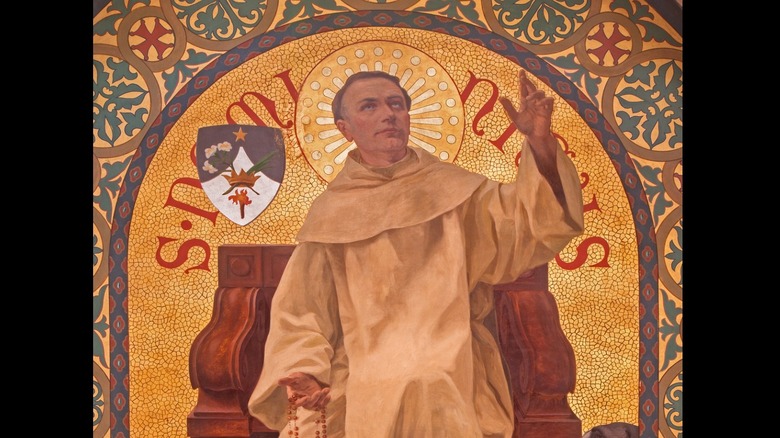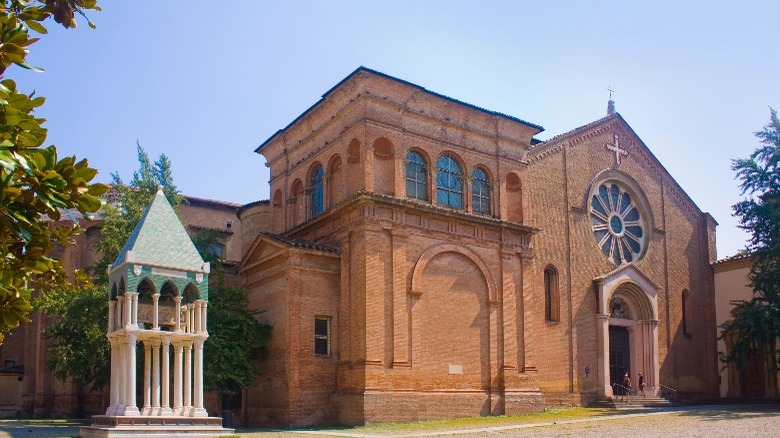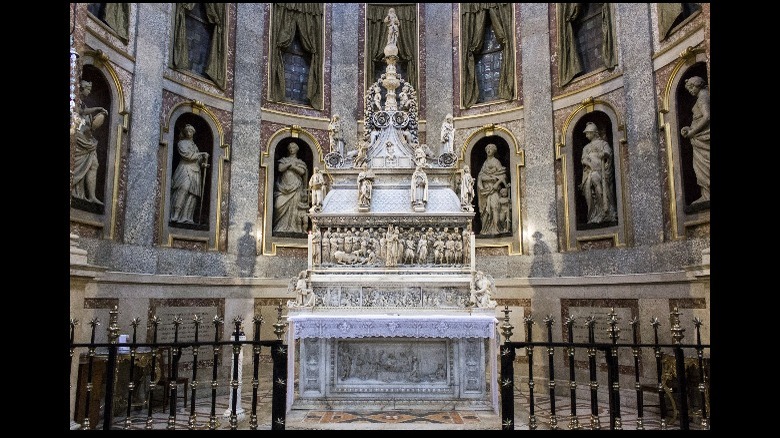Where Is St. Dominic Buried?
While the burial sites of many saints and other religious figures are shrouded in mystery or debate, St. Dominic's burial place is well-documented -– and well-decorated. He lived between 1170 to 1221 and was born into a noble family in Castile, Spain. He joined the church around 1196. In the early 1200s, St. Dominic campaigned against the Albigensians in southern France. The Albigensians, also known as the Cathari, were a group of Christians who believed that the spirit of evil governed the human body, and therefore anything to do with the body –- including eating, drinking, and sex –- is inherently evil and must be renounced. The Catholic Church considered this heresy. Dominic worked to convert Albigensians back to Catholicism (via Britannica).
However, he is better known for establishing the Order of Friars Preachers, called the Dominicans. Per Britannica, the Dominicans are a religious order focused on preaching and scholarship. St. Dominic established the original Dominican houses in Paris and Bologna, Italy, near each city's university, hoping they would become schools of theology.
St. Dominic died in Bologna in 1221, at the convent of San Niccolò delle Vigne. His feast day, or the day particular saints are celebrated, is August 8.
St. Dominic's early tombs
St. Dominic was initially buried behind the altar at the church associated with the convent of San Niccolò delle Vigne. Within just a few years, his burial site was attracting lots of visitors, so his remains were put in a marble sarcophagus and moved into the right aisle of the church where they could be more easily seen. Already, the church was being expanded into what eventually became the Basilica of San Domenico (pictured). This expansion was completed in 1240 (via World History Project).
The saint's new sarcophagus still wasn't easily visible to the pilgrims who came to see it. The crowds were so big that only those in front had a good view. Therefore, in 1264, the Dominican order commissioned a new tomb for the saint, designed by sculptor Nicola Pisano. According to the World History Project, Pisano didn't build most of the tomb himself, leaving the work to his assistant Lapo di Ricevuto.
The tomb's original design was that of a rectangular sarcophagus held up by statues. When the tomb was later redesigned, the statues were removed and are now located in various museums: the archangels Michael and Gabriel are in the Victoria and Albert Museum, London; a statue of "Faith" is in the Louvre; a group of three deacons is in the Bargello, Florence; and another group of deacons is in the Museum of Fine Arts, Boston (via World History Project).
St. Dominic's completed tomb
Work continued on St. Dominic's tomb in the 1400s. According to the World History Project, it was moved to the middle of the church, and a new group of artists added a crowning to the flat top of the sarcophagus. This included the young Michelangelo Buonarroti, who made three sculptures for the tomb: St. Petronio, St. Procolo, and a candle-holding angel (via Bologna Guide). These can still be seen in the basilica. Around the same time, Alfonso Lombardi added a stele to the tomb that depicted the life of St. Dominic.
Starting in 1597, architect Floriano Ambrosini built a new chapel to house the tomb, replacing an earlier, Gothic-style chapel. The new chapel had a ceiling fresco painted by Guido Reni between 1613 and 1615. In the 18th century, the tomb was placed on a marble altar, and it has remained essentially the same since then. Though the tomb still holds St. Dominic's remains, his head is in a reliquary in the back of the chapel (via World History Project).
Bologna Guide says the basilica is open every day of the week and is free to visit. For .50 euros, visitors can also see the choir and cloisters, some of which dates to St. Dominic's time period.


